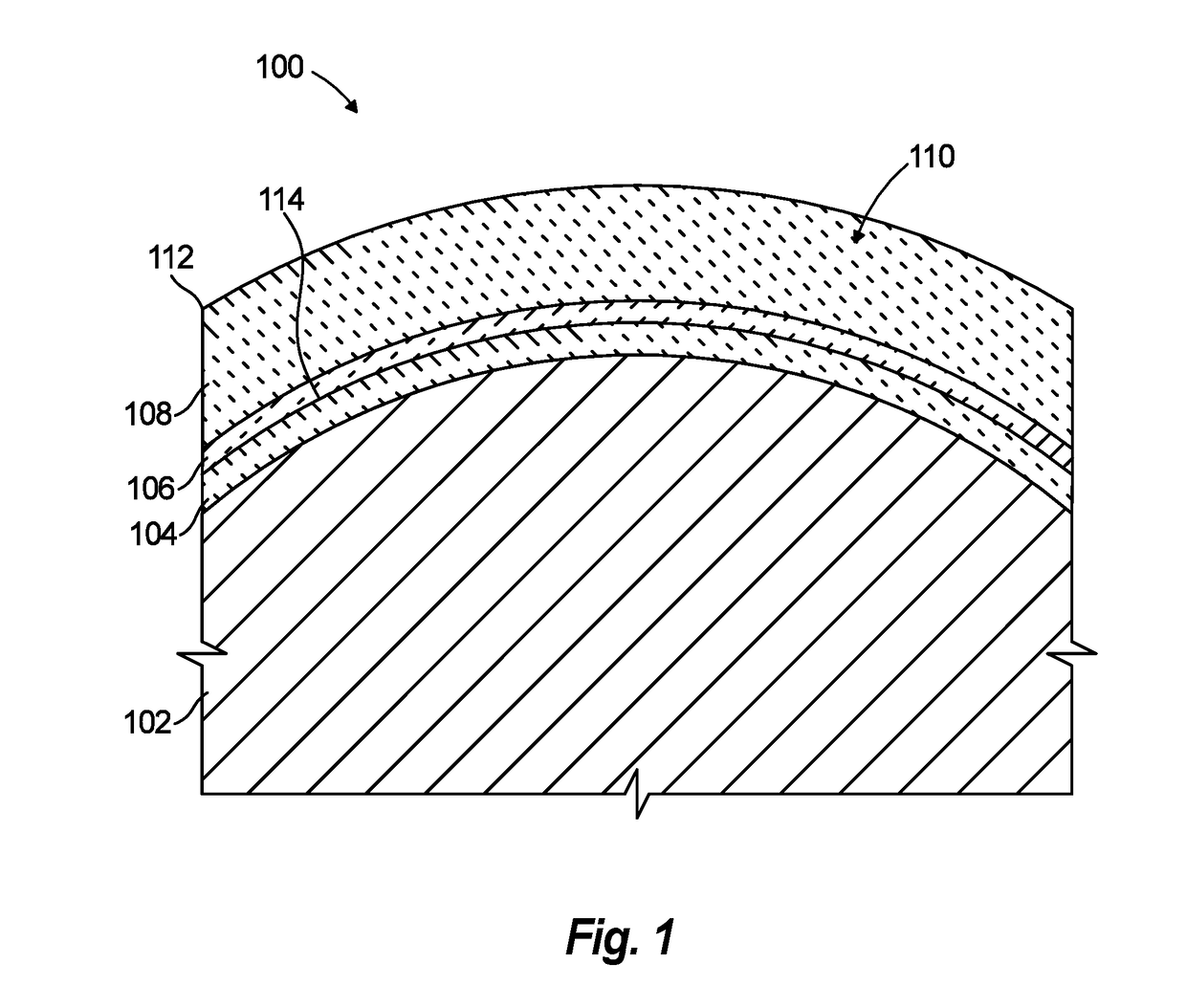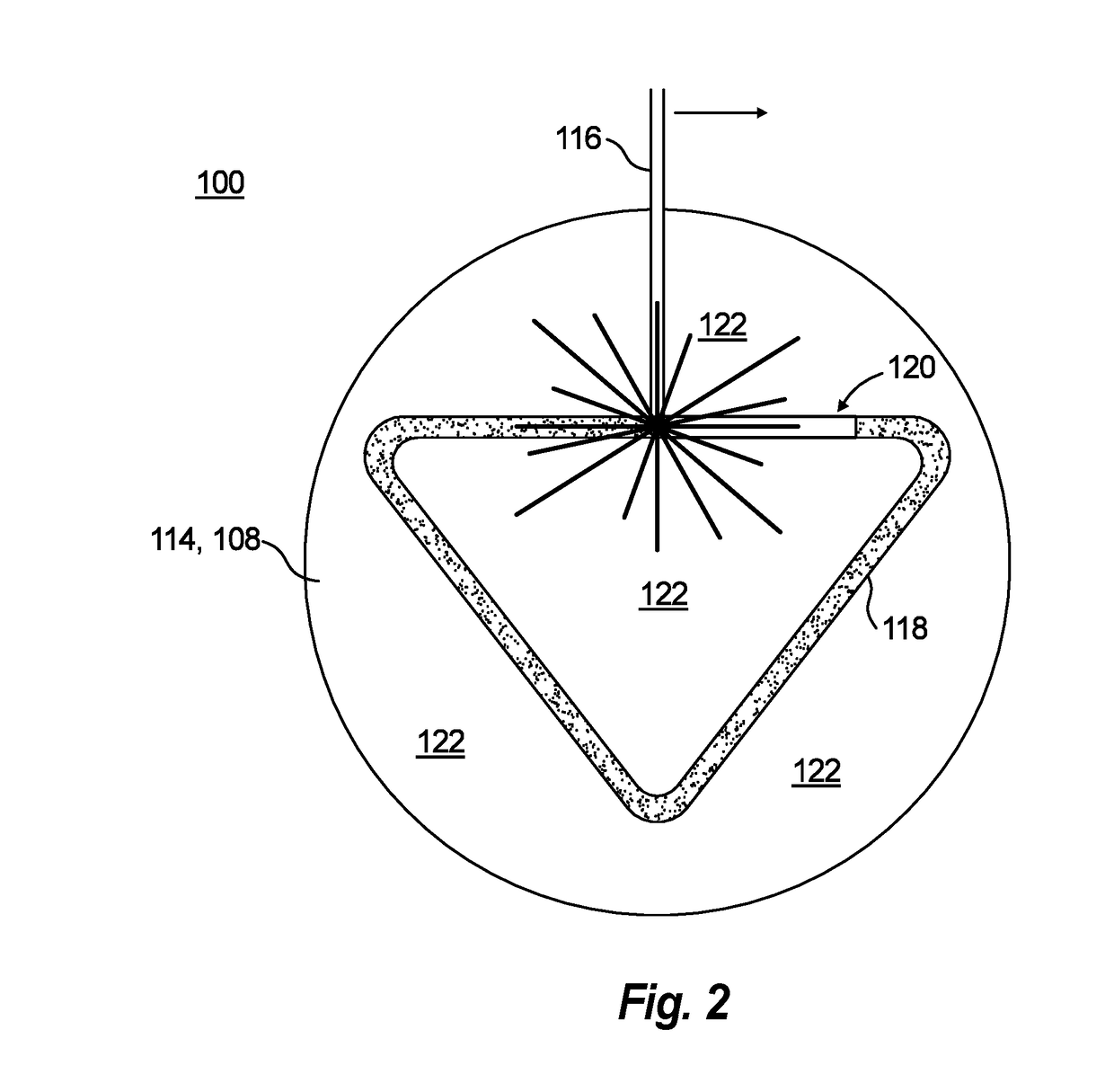Powder bed additive manufacturing of low expansion glass
a technology of additive manufacturing and powder bed, applied in the field of optics and additive manufacturing, can solve the problems of complex features and difficult manufacturing of many small parts, and achieve the effect of reducing the mass of the mirror substrate, level of stiffness and stability
- Summary
- Abstract
- Description
- Claims
- Application Information
AI Technical Summary
Benefits of technology
Problems solved by technology
Method used
Image
Examples
Embodiment Construction
[0016]Reference will now be made to the drawings wherein like reference numerals identify similar structural features or aspects of the subject disclosure. For purposes of explanation and illustration, and not limitation, a partial view of an exemplary embodiment of an optical component in accordance with the disclosure is shown in FIG. 1 and is designated generally by reference character 100. Other embodiments of optical components in accordance with the disclosure, or aspects thereof, are provided in FIG. 2, as will be described. The systems and methods described herein can be used to additively manufacture light-weidth mirror substrates from low thermal expansion glass.
[0017]FIG. 1 shows an optical component 100, e.g., a mirror substrate, on a mandrel 102. A method of forming the optical component 100 includes positioning a preformed glass facesheet 104 on the mandrel 102. The facesheet 104 can be made of titania-silica glass, can be relatively thin, and is contoured for optical ...
PUM
| Property | Measurement | Unit |
|---|---|---|
| optical properties | aaaaa | aaaaa |
| mass | aaaaa | aaaaa |
| stiffness | aaaaa | aaaaa |
Abstract
Description
Claims
Application Information
 Login to View More
Login to View More - R&D
- Intellectual Property
- Life Sciences
- Materials
- Tech Scout
- Unparalleled Data Quality
- Higher Quality Content
- 60% Fewer Hallucinations
Browse by: Latest US Patents, China's latest patents, Technical Efficacy Thesaurus, Application Domain, Technology Topic, Popular Technical Reports.
© 2025 PatSnap. All rights reserved.Legal|Privacy policy|Modern Slavery Act Transparency Statement|Sitemap|About US| Contact US: help@patsnap.com



